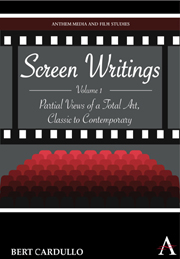Book contents
- Frontmatter
- Contents
- List of Illustrations
- Introduction: The Necessary Film
- Part I Children and the Cinema
- 1 Children of a Lesser God: The Children's Film from De Sica to Kore-eda
- 2 Death Wish, Child's Whim, Auteurist Will: Boyer and Clément's Forbidden Games Replayed
- 3 War Games: On Bahman Ghobadi's Turtles Can Fly
- Part II Literature and Adaptation
- Part III Views and Interviews
- Part IV World Enough and Time
- Bibliography of Related Criticism
- Index
- Plate section
2 - Death Wish, Child's Whim, Auteurist Will: Boyer and Clément's Forbidden Games Replayed
from Part I - Children and the Cinema
Published online by Cambridge University Press: 05 March 2012
- Frontmatter
- Contents
- List of Illustrations
- Introduction: The Necessary Film
- Part I Children and the Cinema
- 1 Children of a Lesser God: The Children's Film from De Sica to Kore-eda
- 2 Death Wish, Child's Whim, Auteurist Will: Boyer and Clément's Forbidden Games Replayed
- 3 War Games: On Bahman Ghobadi's Turtles Can Fly
- Part II Literature and Adaptation
- Part III Views and Interviews
- Part IV World Enough and Time
- Bibliography of Related Criticism
- Index
- Plate section
Summary
The kernel of what would eventually become the film of Forbidden Games (1952) was a somber and disquieting screenplay that its author, François Boyer, found impossible to sell. He expediently repackaged the contents as a novel, published in 1947 under the title The Secret Game and virtually ignored in France, but which enjoyed a major, if freakish, commercial success in America. Unexpectedly, it now looked like a hot property, so René Clément and the screenwriting partners Jean Aurenche and Pierre Bost took Boyer's film script-cum-novel and turned it back into a screenplay. But that wasn't the end of the movie's tortuous prehistory. Forbidden Games was originally planned as a humble short subject – the middle section of a three-part omnibus or anthology film to be called Cross My Heart and Hope to Die. This larger project got shelved after financing fell through, and the existing footage composed no more than a vignette. Impressed by its lyricism and grace, however, the producer Robert Dorfmann urged Clément to expand the material to feature length.
Like many great films, then, Forbidden Games sprang serendipitously from a chain of accidents, failures, and stopgaps, none of which are remotely evident onscreen. Clément's direction is so scrupulously measured, and the theme so archetypal, that every shot achieves a kind of fatedness.
- Type
- Chapter
- Information
- Screen WritingsPartial Views of a Total Art, Classic to Contemporary, pp. 19 - 30Publisher: Anthem PressPrint publication year: 2010



